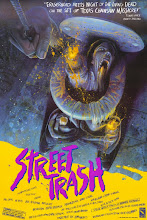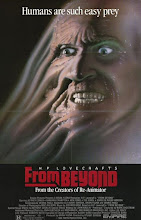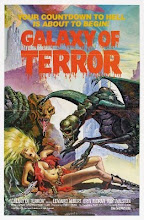I'm no longer dead against the current trend of remaking the horror classics of the '70s and '80s. I used to bitch about it endlessly, but I've made my peace with it. The fact is that we now live in a world where classics like Dawn of the Dead, The Hills Have Eyes and Maniac have all been superbly remade. If anything, the good remakes enhance the legacy of the originals, while the poor ones are simply swept under the rug and forgotten.
So what is the trick to crafting a good horror remake? I doubt it's anything more than exactly the same factors that make any successful movie work. Good filmmaking seems to be the result of lightning in a bottle - a fluky convergence of talented, like-minded people who happen to be in the right place at the right time. To suggest that a film is the visionary creation of any single person (i.e. the director) is a falsehood. It's become a kind of shorthand when discussing movies, but it's an over-simplification of a very complicated process. Good movies - remakes or otherwise - spring from the successful collaboration of scores of artists, craftspeople and technicians. Zack Snyder isn't a director that I'm particularly fond of, but his Dawn of the Dead works like gangbusters because his strengths as a visual stylist and skillful action director fused perfectly with James Gunn's excellent screenplay and a killer cast led by Sarah Polley. Remove any one of those elements and it might have been a failure.
You can also apply that same logic to answer a question that's burned people up for decades: why was there such a sudden and drastic change in the aesthetics and quality of Argento's movies after Opera (or Trauma or The Stendhal Syndrome if that's your preference)? You have to look at the players who worked alongside him throughout his golden years (Deep Red - Opera in my opinion), and are then conspicuously absent afterwards. Producer (and father) Salvatore Argento; production designer/art director Giuseppe Bassan; editor Franco Fraticelli; cinematographers Luciano Tovoli and Romano Albani; Argento's then partner and muse Daria Nicolodi; and of course, Goblin. During this period he was most definitely not working in a creative vacuum*.
All this rambling about remakes and Argento brings me to the latest sacred cow to be sacrificed to the remake gods: Suspiria. After slipping through David Gordon Green's fingers, the project has fallen into the hands of an interesting Italian director who seems a good fit for the material. Luca Guadagnino is the director of 2009's acclaimed I Am Love (Io sono l'amore), a film that features a visual style that is noticeably reminiscent of Argento's heyday. The cinematographer on I Am Love was one Yorick Le Saux, and the way his Steadicam prowls and weaves through the film's interiors strongly recalls the camera acrobatics and architectural cinematography of Suspiria and Tenebre**. Guadagnino and Le Saux have worked together frequently, so going back to that idea of prolonged, successful collaborations, we can only hope that the two are reteaming for the Suspiria redux***.
Honestly, the thing that has me most jazzed about all this is that Suspiria has been given to an Italian director, one with classical European sensibilities who is not a horror auteur. The possibilities that arise from this are more interesting than if the film had been handed to someone obvious like Aja or Bustillo & Maury. As visionary as they may be, directors like that can be creatively hemmed in, simply by being too close to their influences. Argento's 1977 masterpiece has had such an enduring impact because it's more than just a horror movie. It's a crazed, fever-dream of art and imagination, birthed from a group of incendiary minds at the peak of their creativity, and during a period of radical cinematic experimentation. The remake should be given the artistic freedom to once again break the horror mold to become something new and hopefully dangerous. You can read some interesting quotes from Guadagnino on the direction he wants to take the remake in here.
*There are exceptions to this hypothesis of course. Ronnie Taylor, cinematographer on the gorgeously shot Opera, would return for Phantom of the Opera and Sleepless, and although those films do recall some of the visual flair of Argento's early films, Taylor's work there is but a pale imitation. Goblin's score for Sleepless and Claudio Simonetti's ongoing work on The Card Player and Mother of Tears proved that they too were not immune to late career mediocrity. Most confoundingly (and depressingly), Suspiria and Tenebre's Luciano Tovoli would return to shoot the truly shitty looking Dracula 3D.
**Le Saux also shot Jim Jarmusch's beautiful Only Lovers Left Alive, so he's shown that he can do gothic atmosphere with the best of them.
***Guadagnino is a director who obviously values continued partnerships, having worked with the brilliant Tilda Swinton constantly throughout his career. He's gone on record as saying that he hopes to bring her on board for Suspiria, along with the rest of the cast of his most recent film, A Bigger Splash (including the consistently excellent Ralph Fiennes).
artwork by John Salinero and Malleus


















_poster.jpg)



































































No comments:
Post a Comment